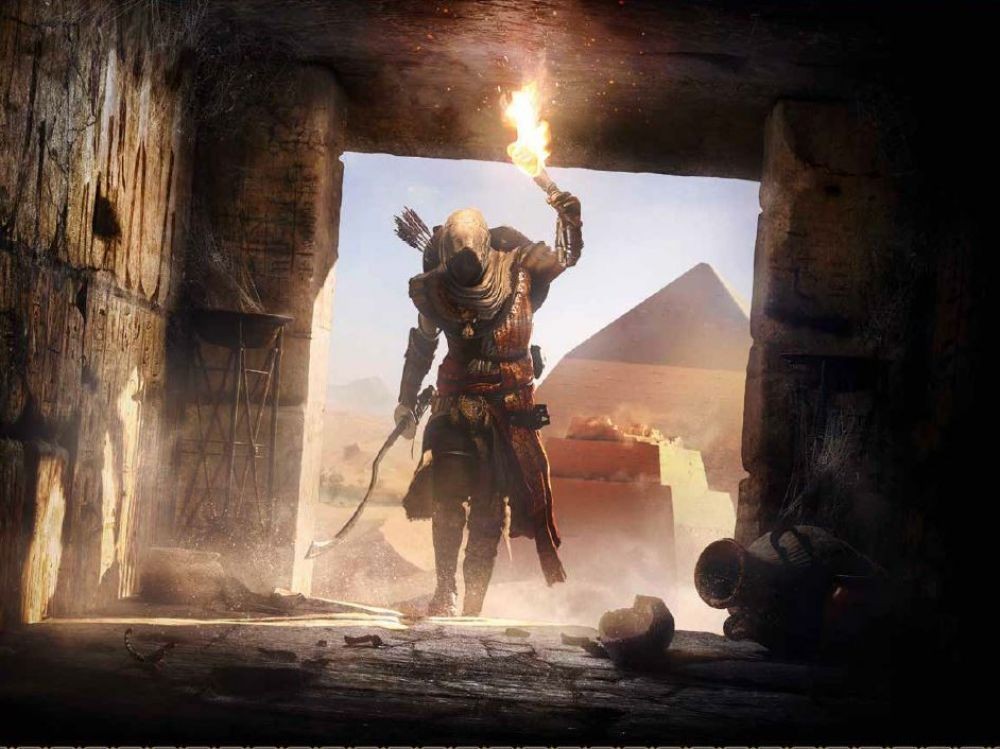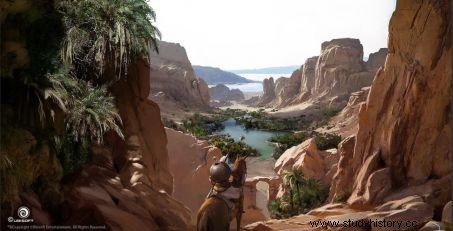The next version of the Assassin's Creed video game is also intended to be a story of ancient Egypt with integrated hieroglyphics translation.

The new Assassin's Creed video game is set in ancient Egypt.
The French video game giant Ubisoft presents on October 30 a new installment of its famous series Assassin’s Creed Origins this time taking place in ancient Egypt. But this next part will be accompanied, at the beginning of 2018, by an original initiative:that of the Discovery Tour by Assassin's Creed:Ancient Egypt , a kind of cultural wandering in ancient Egypt. "The game will be completely stripped of all its narrative aspects and its scenes of violence, to keep only the educational aspect in order to offer several "tours" in the land of the pharaohs “, we explain at the headquarters of Ubisoft, in Paris. It will be enough for the owners of the game to perform a free update in order to discover the life of the ancient inhabitants of the Nile Valley. “The reconstructions are realistic, interactive and in 3D “, explains Jean Guesdon, the creator of the game. “We have thus scripted a dozen interactive guided tours with the help of specialists and historians. The idea being that video games can be a source of knowledge and learning" . This Egypt will undoubtedly make people dream with the fabulous graphic contributions of the architect, archaeologist and former CNRS researcher, Jean-Claude Golvin, one of the first specialists in the world to have restored the great sites of antiquity in images.

Promised walks in the heart of ancient Egypt. © Ubisoft
An instant hieroglyph translation tool
At the same time, Ubisoft associated with the American group Google is carrying out another ambitious project called The Hieroglyphics Initiative . Objective:to provide an instant translation tool for hieroglyphs, the writing of the ancient Egyptians, based on machine-learning , a computational method based on machine learning. “We are still working on the technical approach and the algorithms, and we hope to be able to publish our next set of results before the end of 2017 , specifies to Sciences et Avenir Alex Fry, the director of the project. The ultimate goal is to provide this technology in open source accessible to all ". Why not make use of already existing machine translation systems, such as VegA, an online hieroglyph translator? "We know that there are specialists currently working on these technologies applied to hieroglyphs, and if some have already made progress in these areas, we would be happy to establish collaborations added Perrine Poiron, a young Egyptologist from the University of Quebec in Montreal who is taking part in the project.
However, these various attempts at automatic translation, the first of which date back to the 1990s, leave some specialists skeptical. “You have to measure the limits of these techniques, especially when they relate to a dead language that we are far from mastering perfectly and which, moreover, is conveyed by a very complex writing, explains the famous Egyptologist Pascal Vernus, director of studies in Egyptian linguistics and philology at the Ecole Pratique des Hautes Etudes, in Paris, whom we made react. Of course, small texts can be "translated", with inevitable approximations, but it should not be believed that by feeding a long hieroglyphic text to the machine one will obtain a coherent and satisfactory translation ". Either way, let's dream. The decipherment of hieroglyphs accessible to all?... To see. After all it's just a game.

Hieroglyphs from the Temple of Edfu, Egypt. © Michel Gunther / Biosphoto /AFP
What are hieroglyphs ?
The ancient Egyptians, in their daily life, used cursive writing (hieratic and demotic, editor's note). These hieroglyphs ("sacred engravings", in Greek), were only accessible to 1% of initiates! These "images" were not there for what they represented, but for the phonetic element associated with them. Arranged in rows or columns, the hieroglyphs are oriented both from right to left and from left to right.
